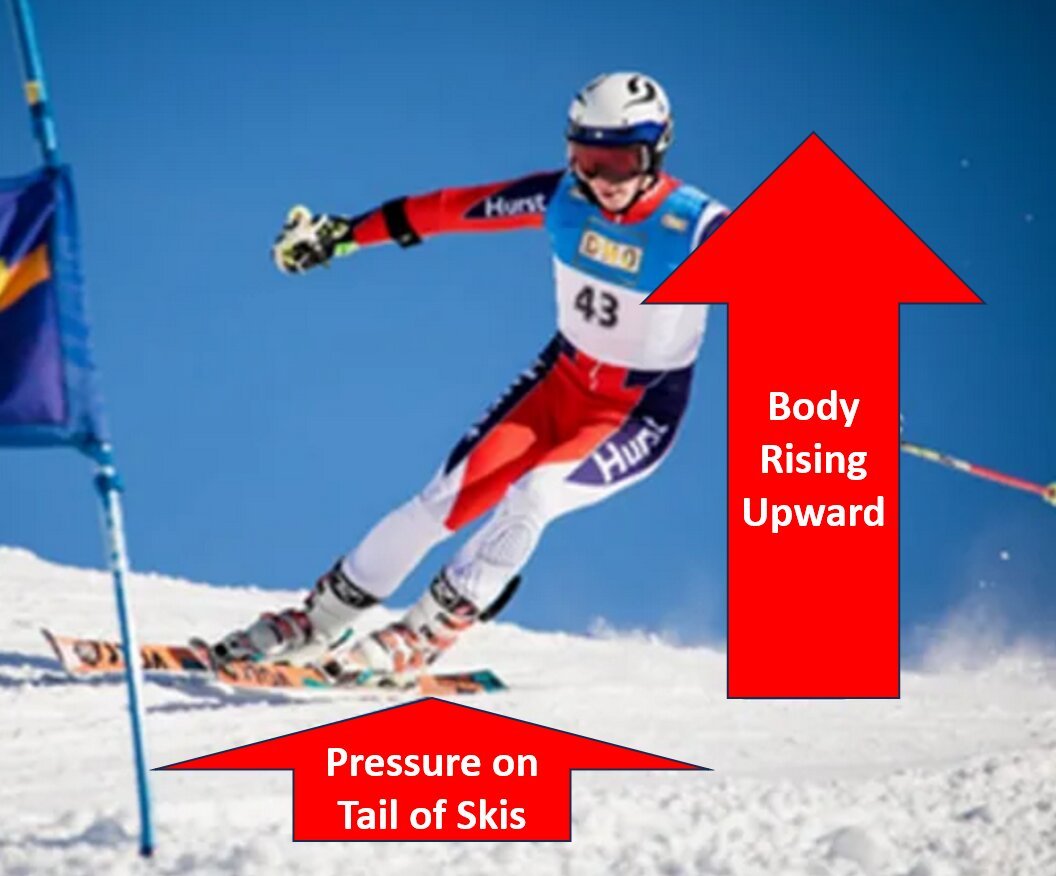Reduce Risk of Injury
Photology 1971/Alamy/Graphics by ARM
Overview
The sport of skiing and ski racing come with inherent risks, but these risks can be reduced through proper technique, equipment, and fitness.
This learning module emphasizes the effectiveness of the athletic stance, the importance of biomechanics in reducing the risk of knee injuries, and provides links to exercises designed to improve balance, strength, and agility.
A video focusing on reducing the risk of knee injury for women is included.
Athletic Stance
Picture a tennis player ready to receive a serve, the stance of a goal keeper about to stop a penalty shot, or a football player preparing for a tackle.
They all apply the optimum position of the human body to be balanced and strong on their feet.
Their ankles are flexed forward to apply pressure under the balls of the feet, the upper body hinges forward at the waist, the arms are forward and to the side, the chin is level to the ground and the eyes are looking forward.
The Athletic Stance is effective because it establishes a centre of gravity that runs through the human body, from the head to the feet, as demonstrated in this picture of a weight lifter lifting a heavy weight.
Image by Freepic/Graphics by ARM
Protect your Knees
Some skiers start a turn by tipping their outside knee inward. This action can lead to injuries since the knee is designed to flex and extend forward and backward but not designed to tip laterally.
The human knee is capable of bearing significant weight when the thigh and shin bones are aligned, as demonstrated in the following picture.
Flex and Stack the Outside Knee
When flexing the outside ankle towards the big toe and feeling pressure under the ball of the foot, the ski will tip on its inside edge just enough to start carving, while maintaining proper alignment with the stacked leg.
This action safeguards the knee joint, ligaments, and tendons, as demonstrated in the Learning Module: Flex the Outside Ankle.
Many skiers who experienced knee pain are now skiing pain-free by flexing towards their big toe and keeping their outside leg stacked.
The Risks of the Low and the High Stance
A lower stance is sometimes used by advanced ski racers.
Austrian Marcel Hirscher, the former World Champion, was known for applying pressure to the back of his skis during the transition between turns, as illustrated in the picture below.
However, this position and action can place significant strain on the knee ligaments and tendons, potentially leading to injuries. The skier must aggressively push their body forward to apply pressure to the front of the skis to start the next turn.
Some skiers will “Pop Up” or rise their body away from the snow between turns and then drive their body downward to start the next turn as shown in this picture.
Risks of ‘Popping Up’
The risk associated with this action is the brief instability that happens when the body rises and the skis become light on the snow.
Following the example of most World Cup racers, returning to the Athletic Stance and rolling the body forward between turns is significantly more stable and efficient as demonstrated in the Forward Movement Learning Module.
Strategies to Reduce the Risk of Knee Injury for Women
The “Q Angle” of the human body can contribute to knee injuries in women. To learn more about reducing this risk, watch the following video.
Video by WILDR Online Fitness Training
Key Takeaways
In skiing, standing with your feet under you, bending your ankles forward, and tilting your upper body forward is similar to the stance athletes adopt in other sports.
This stance helps you stay stable and move easily, which is important for reducing the risk of injuries, especially to the knees.
Females can reduce the risk of knee injury by performing exercises to address the ‘Q Angle.’
Suggested Learning Modules
Go to Safety Gear or Fitness
Important Message: Skiing and ski racing involve inherent risks. It’s essential to ski responsibly and stay within your skill level and personal comfort limits.






